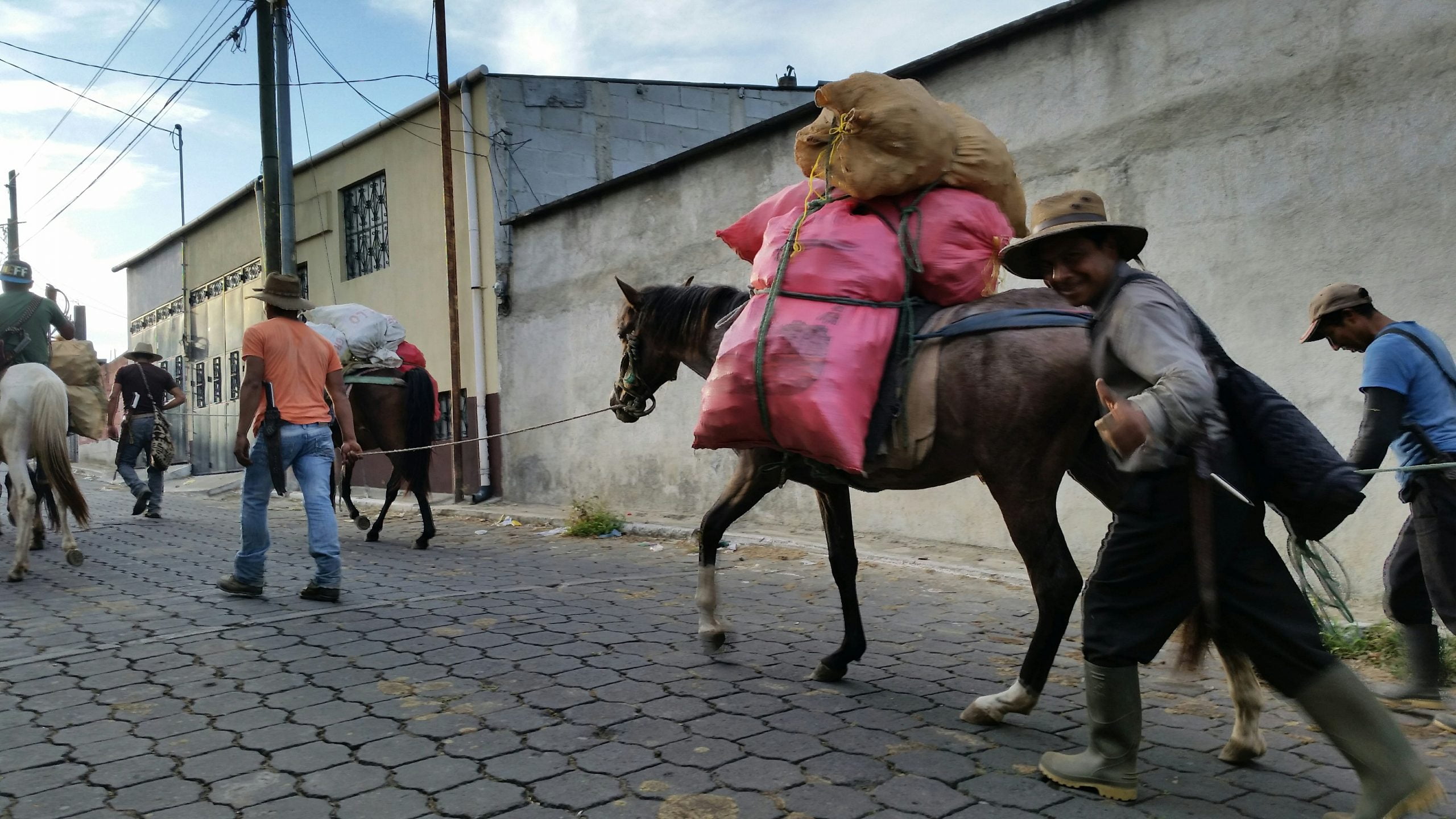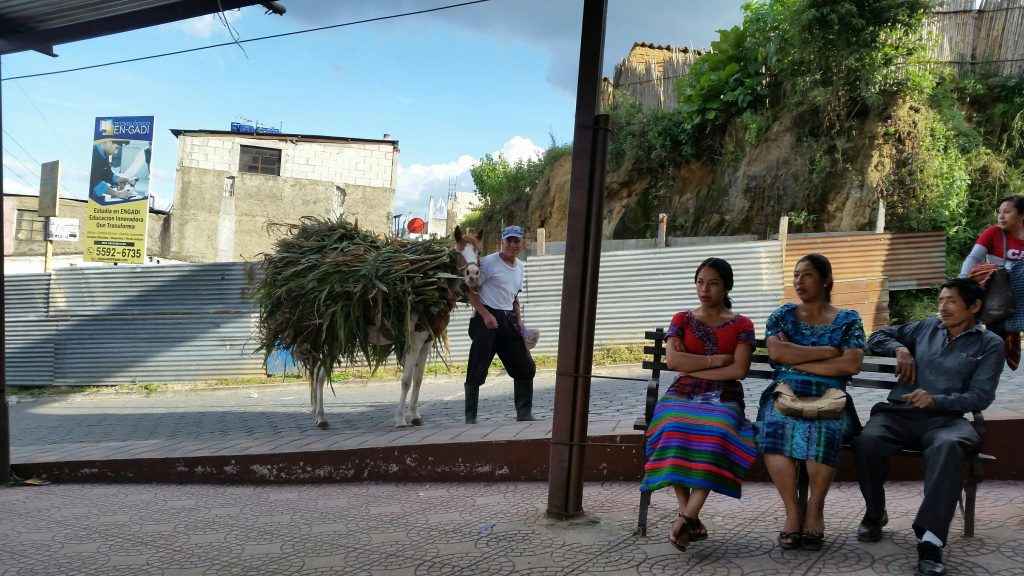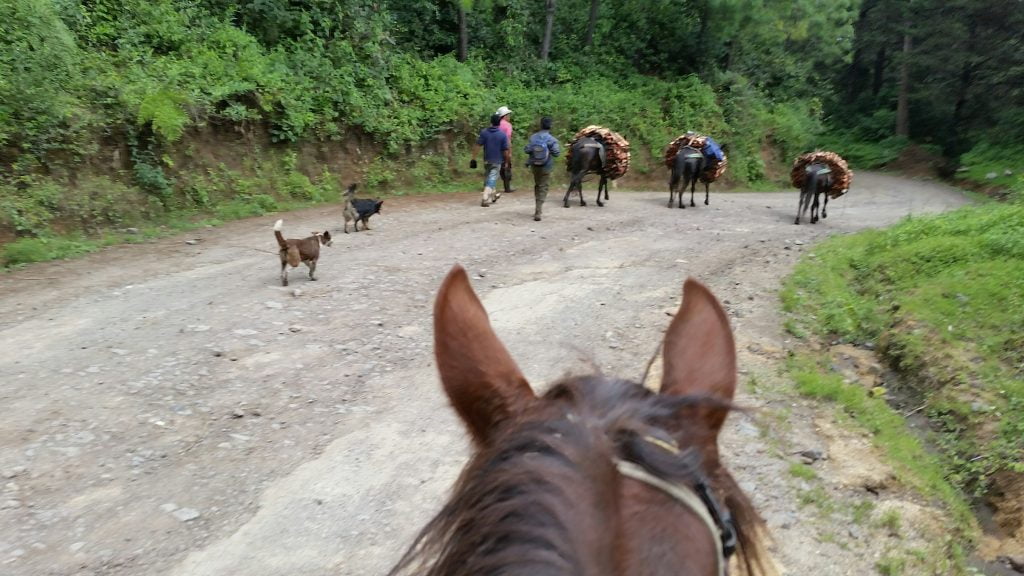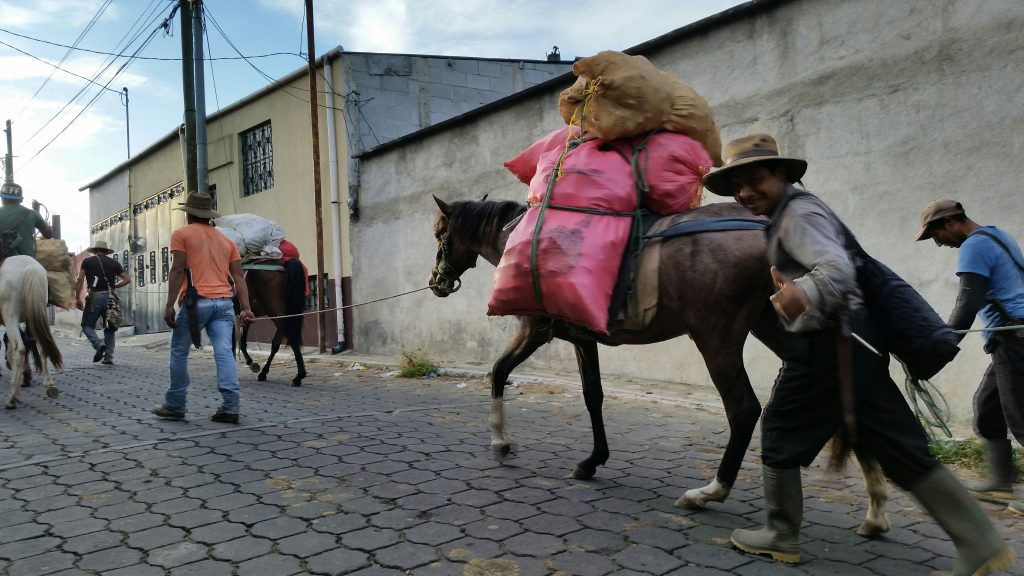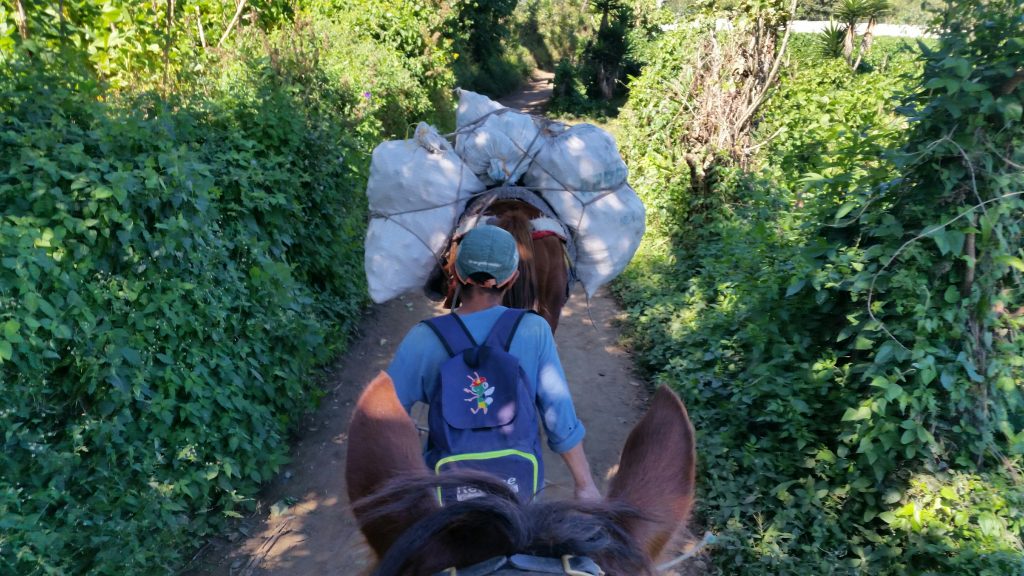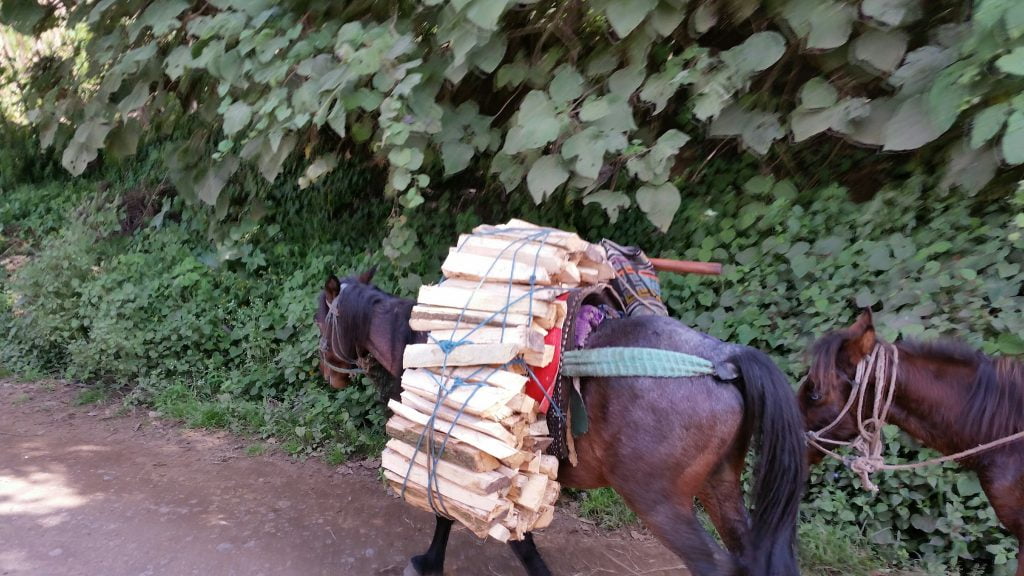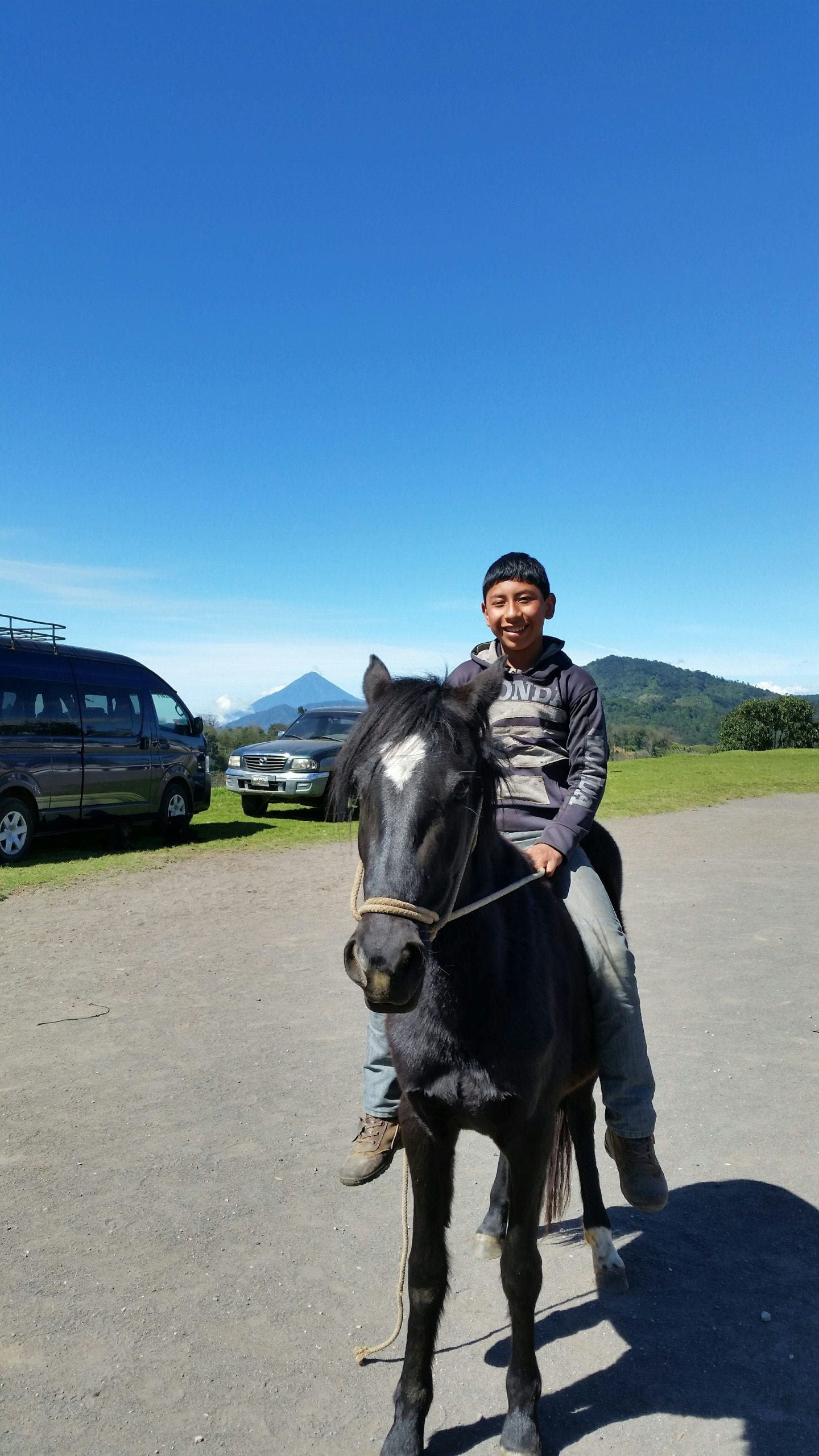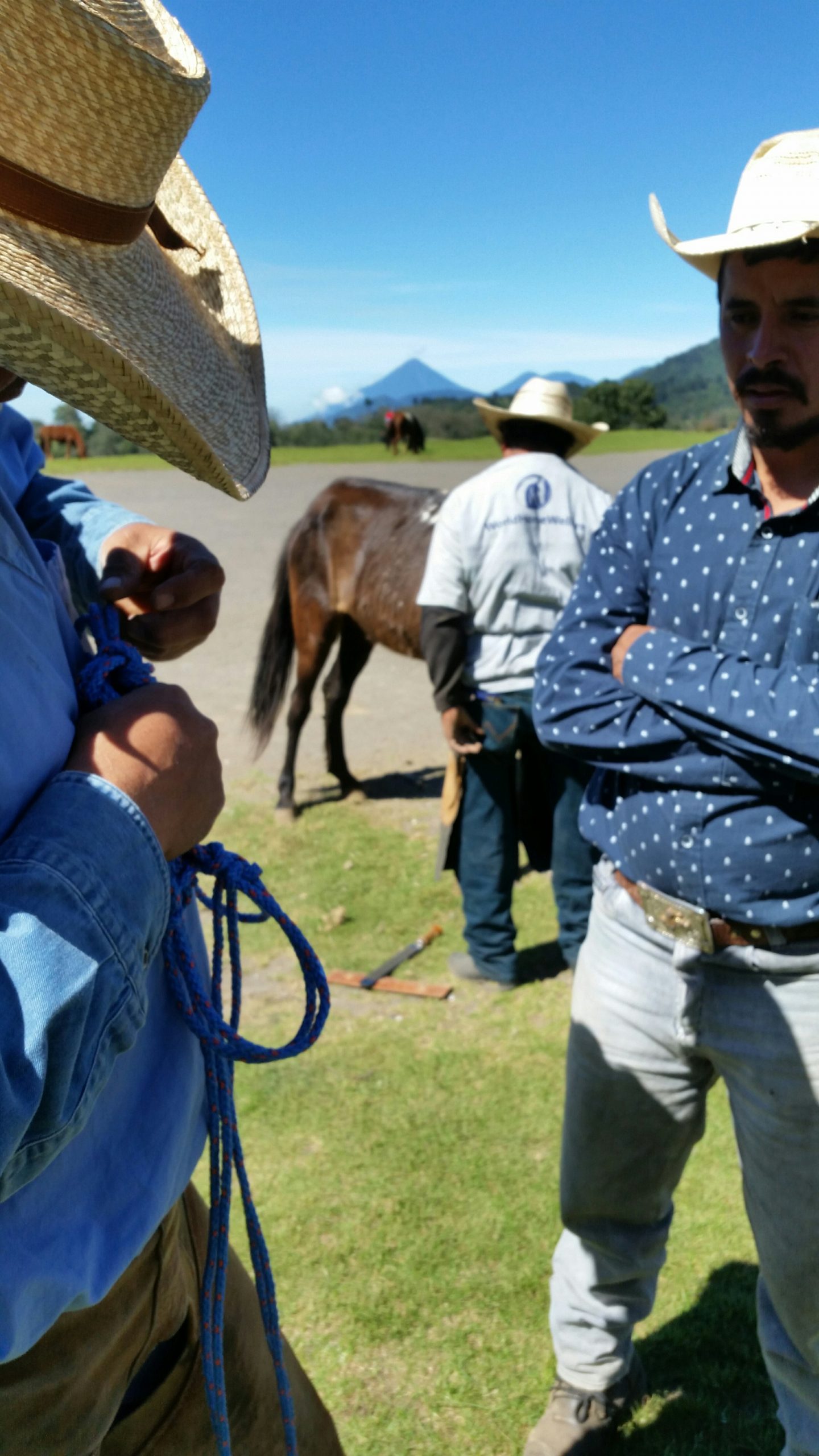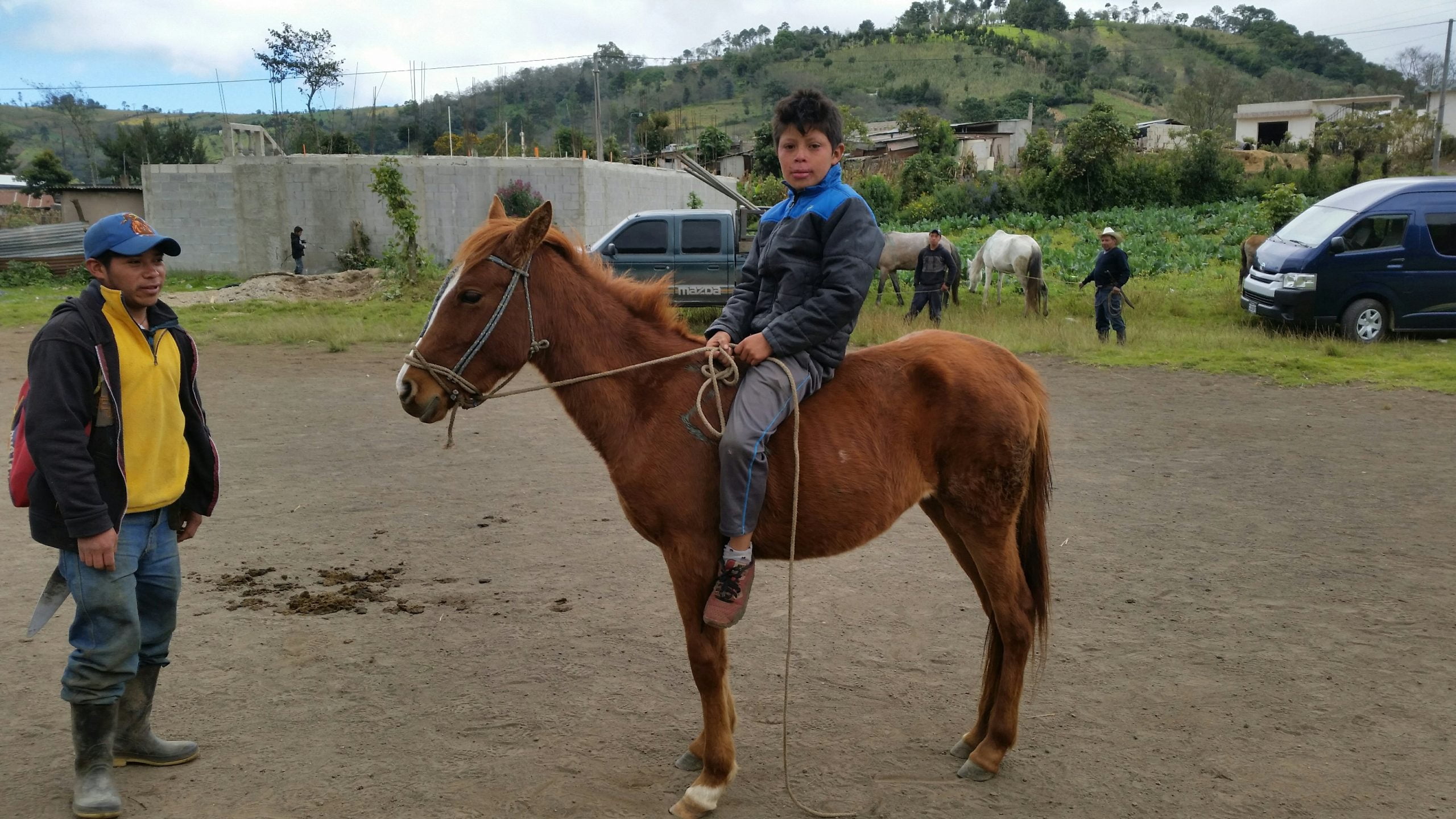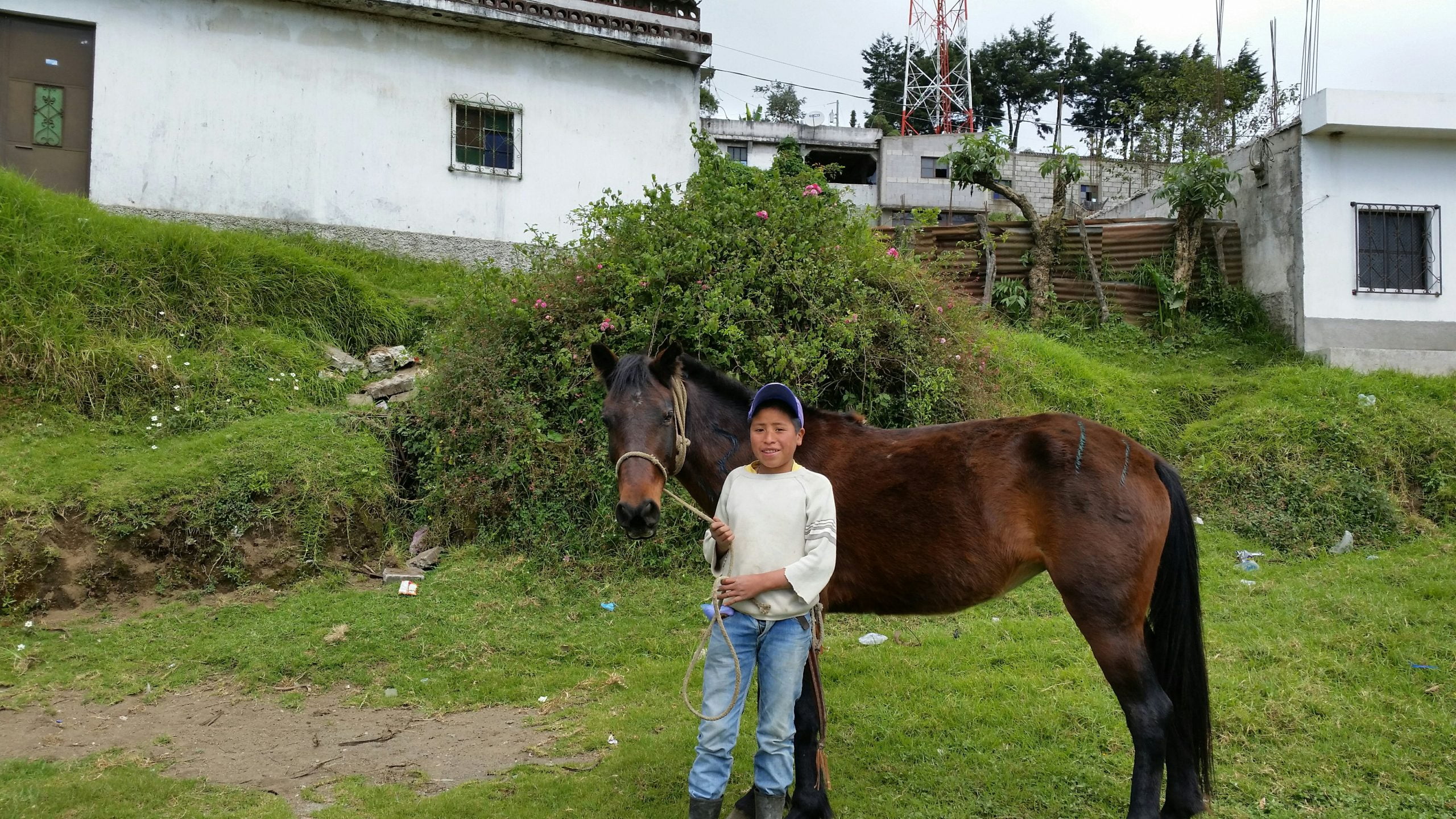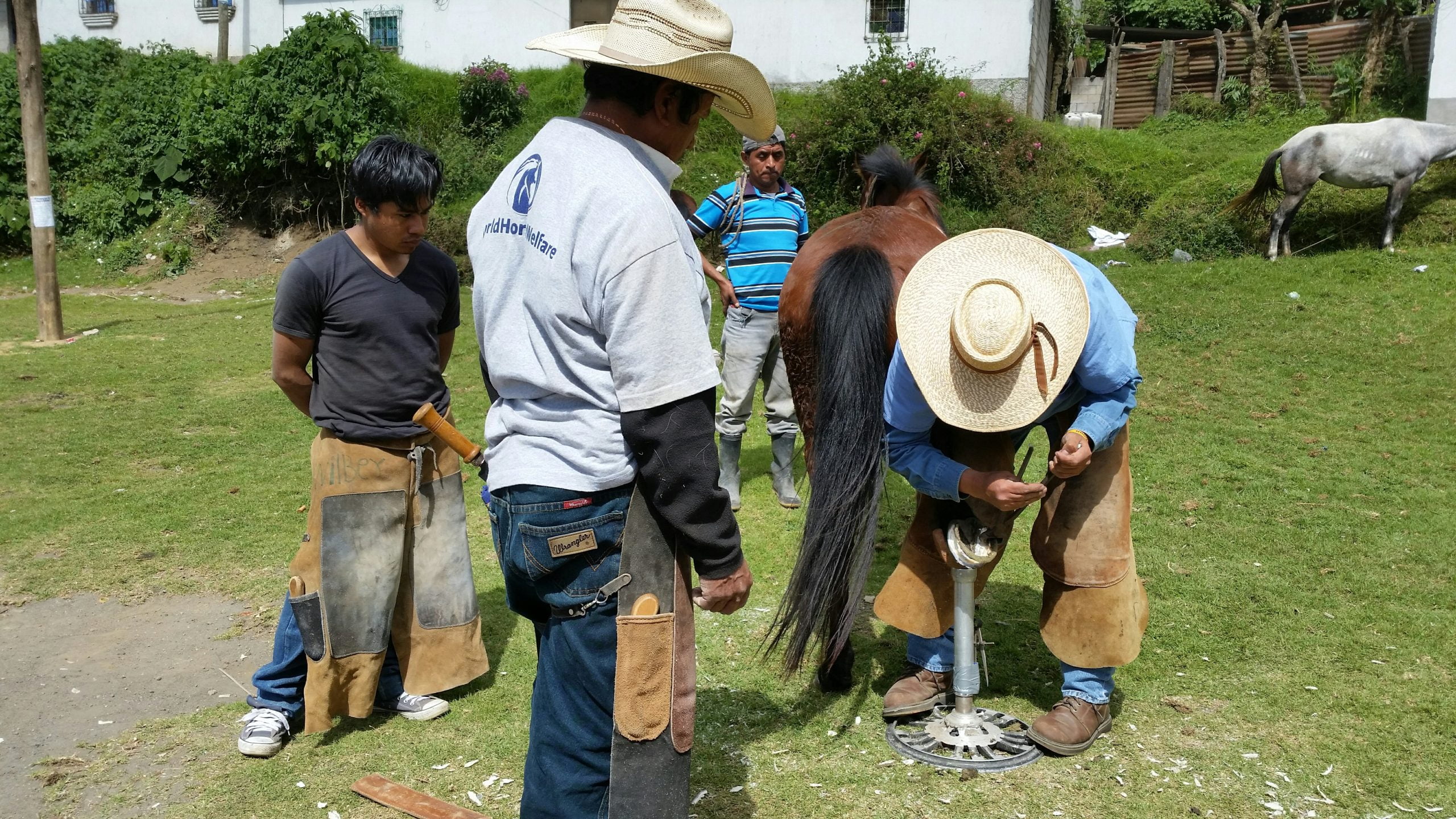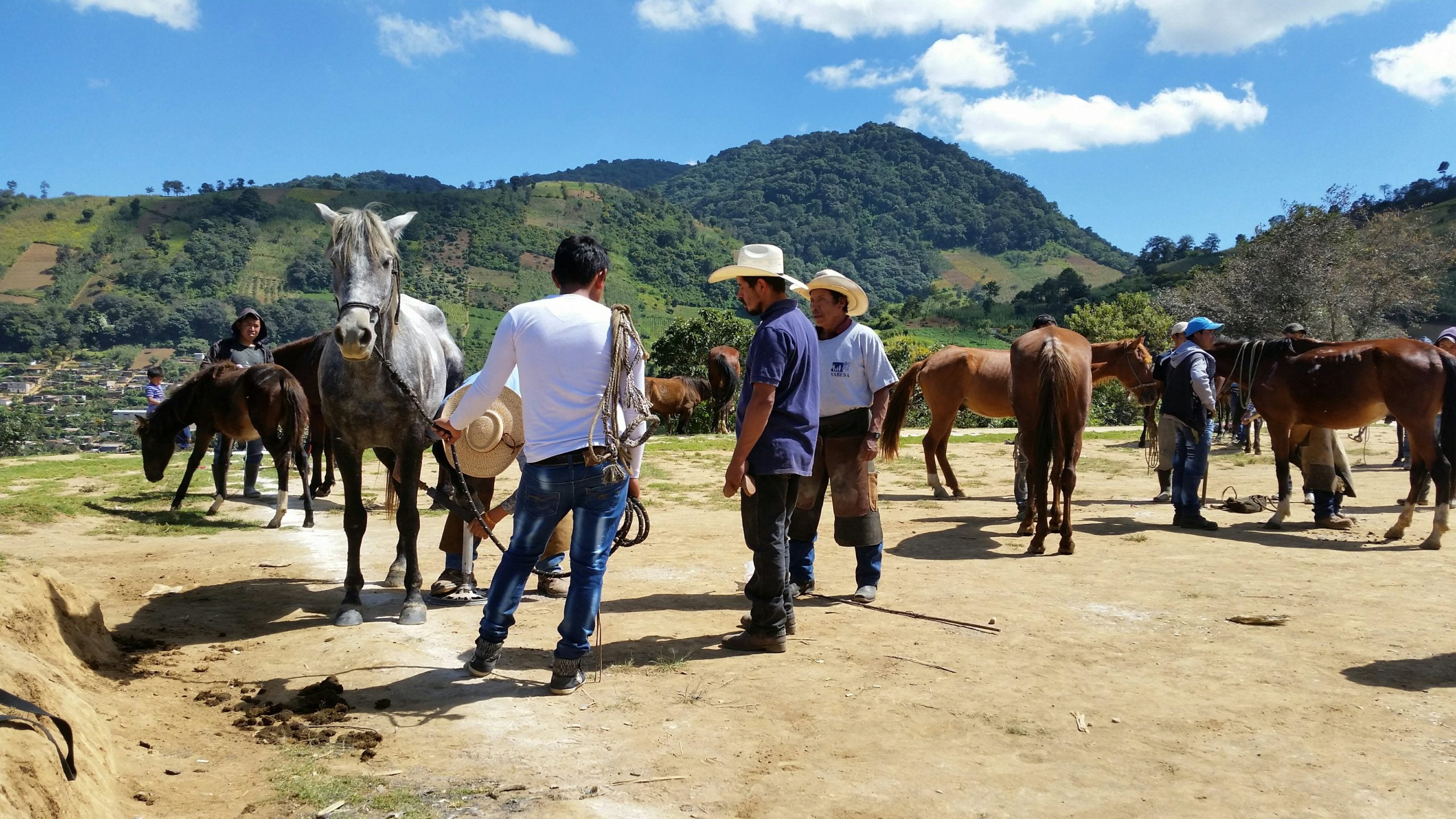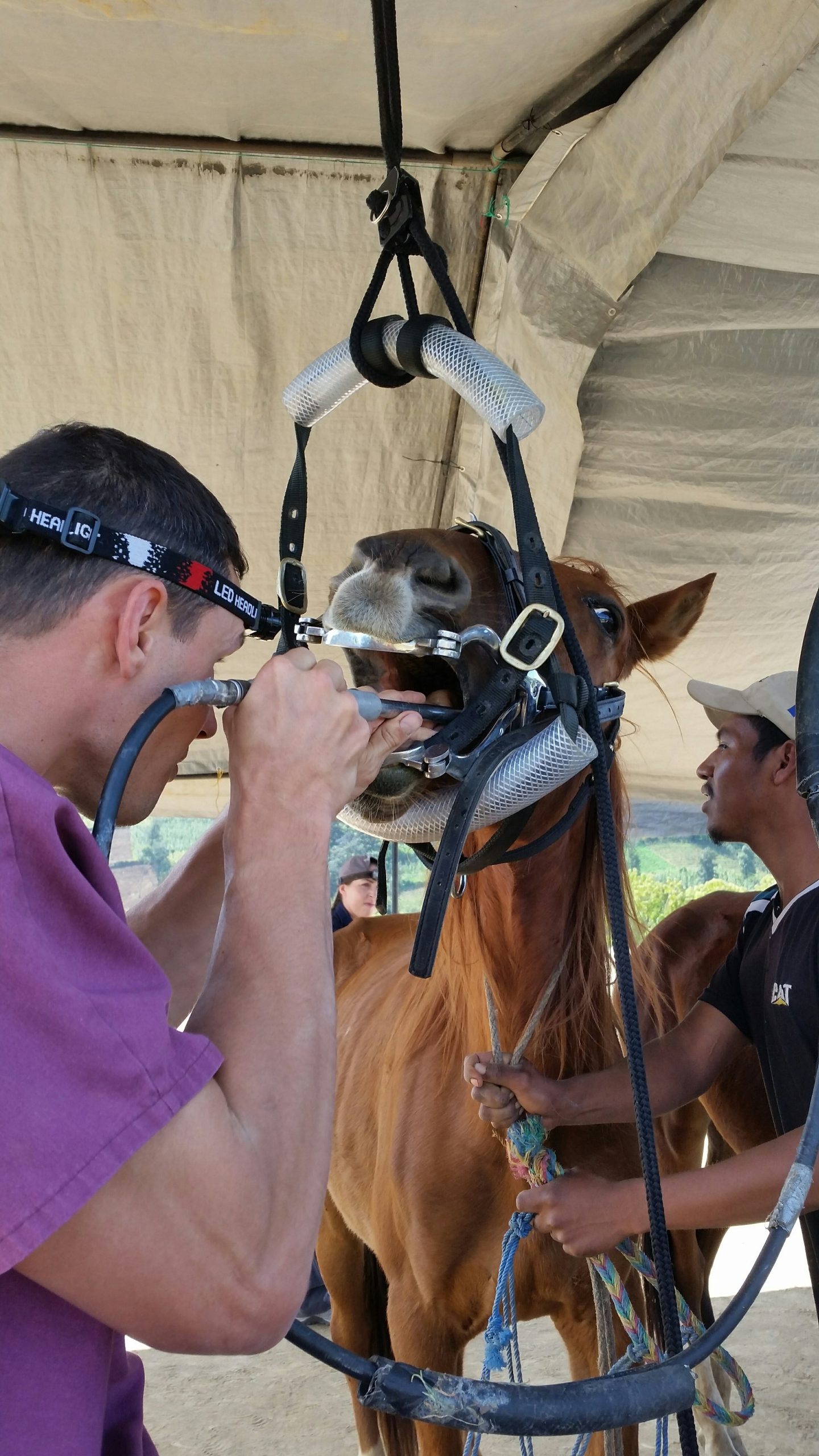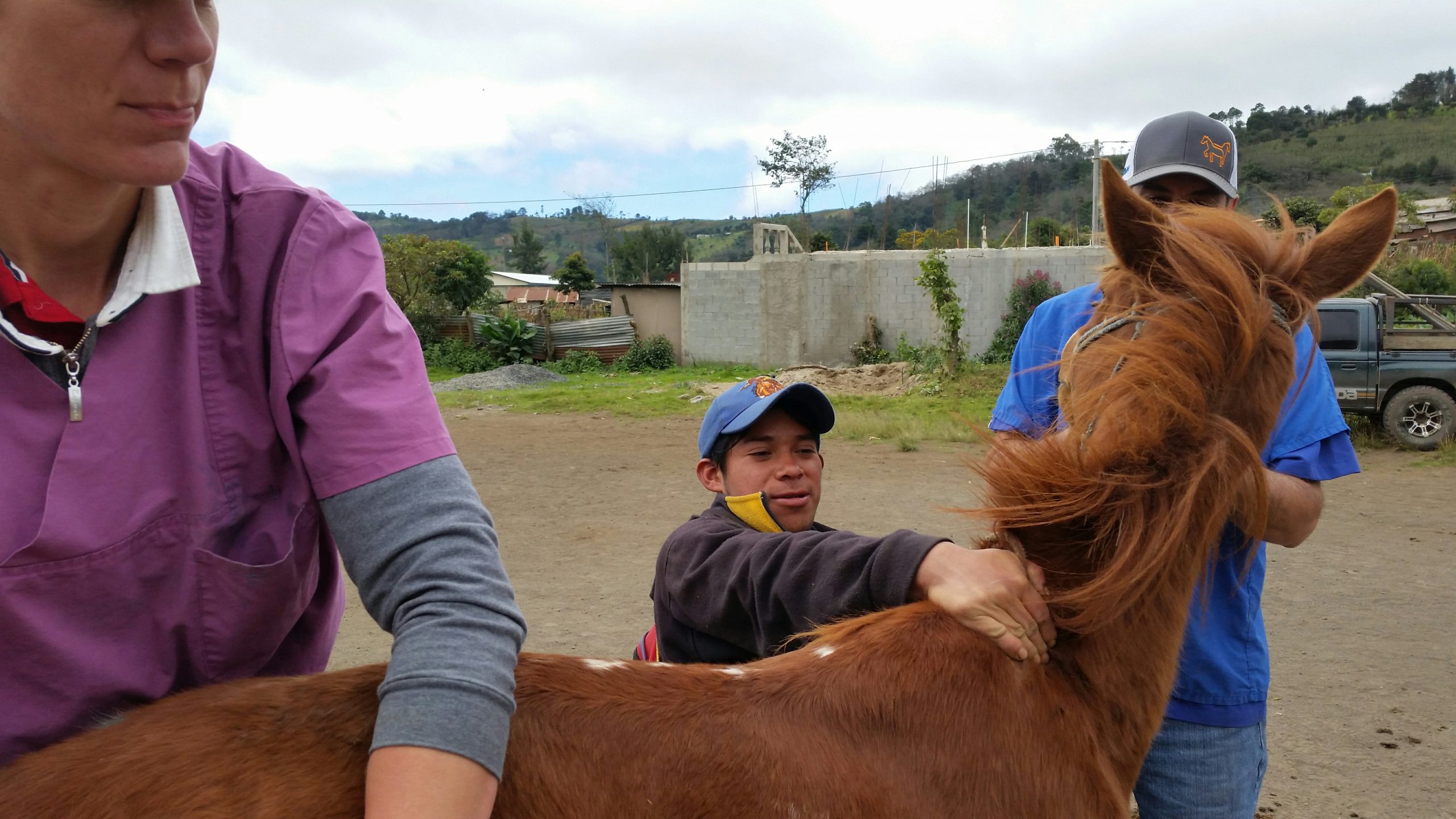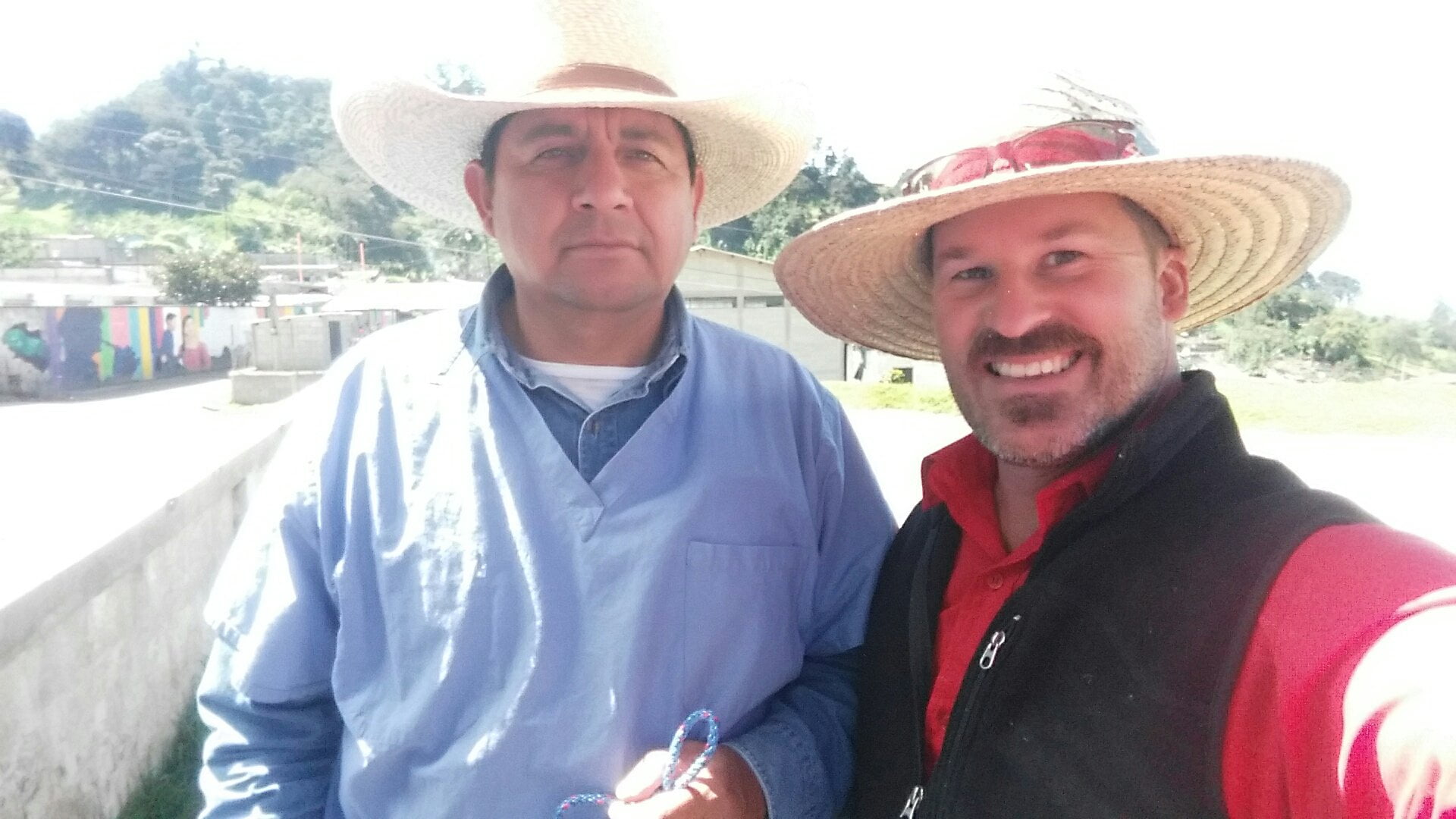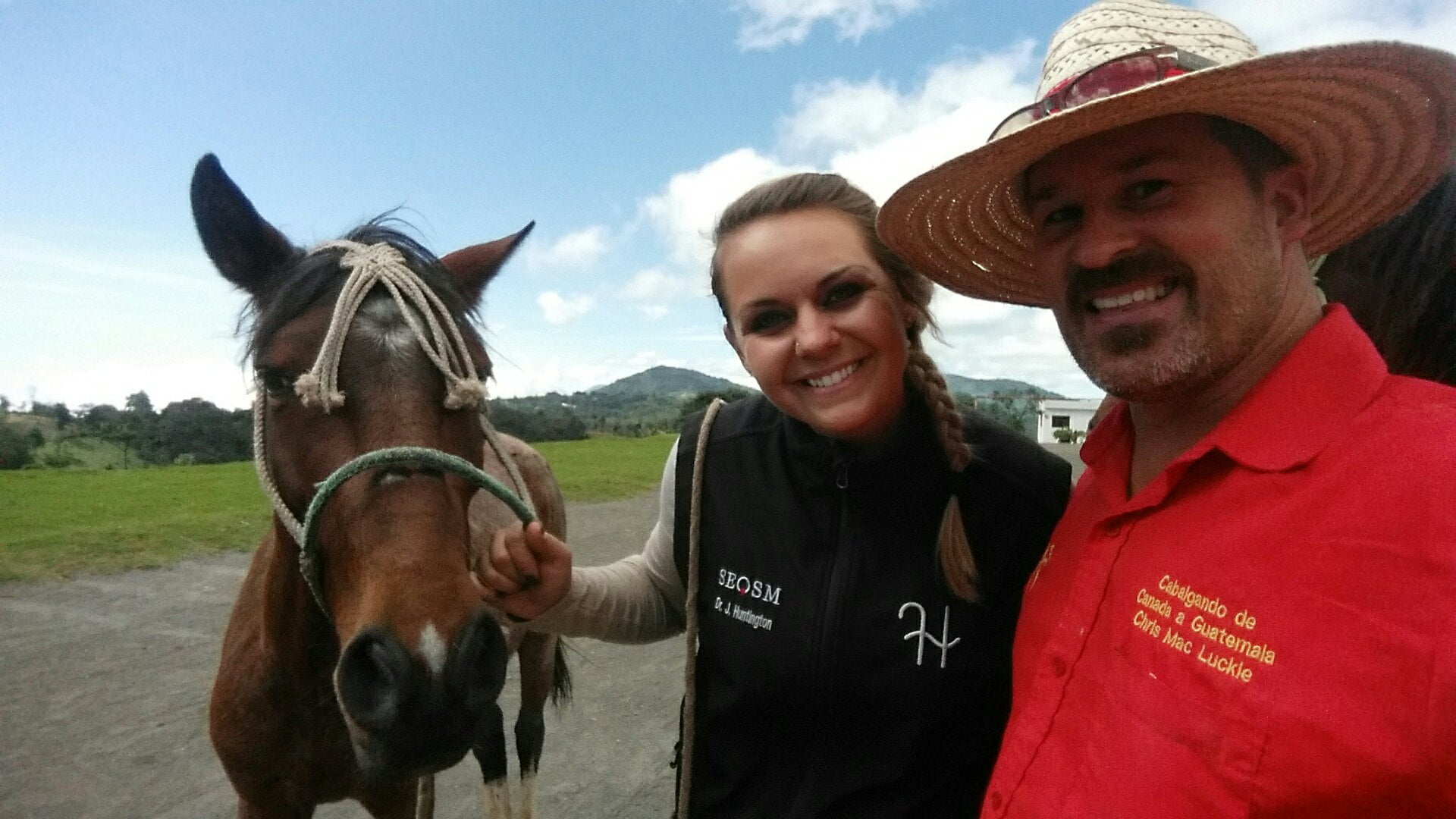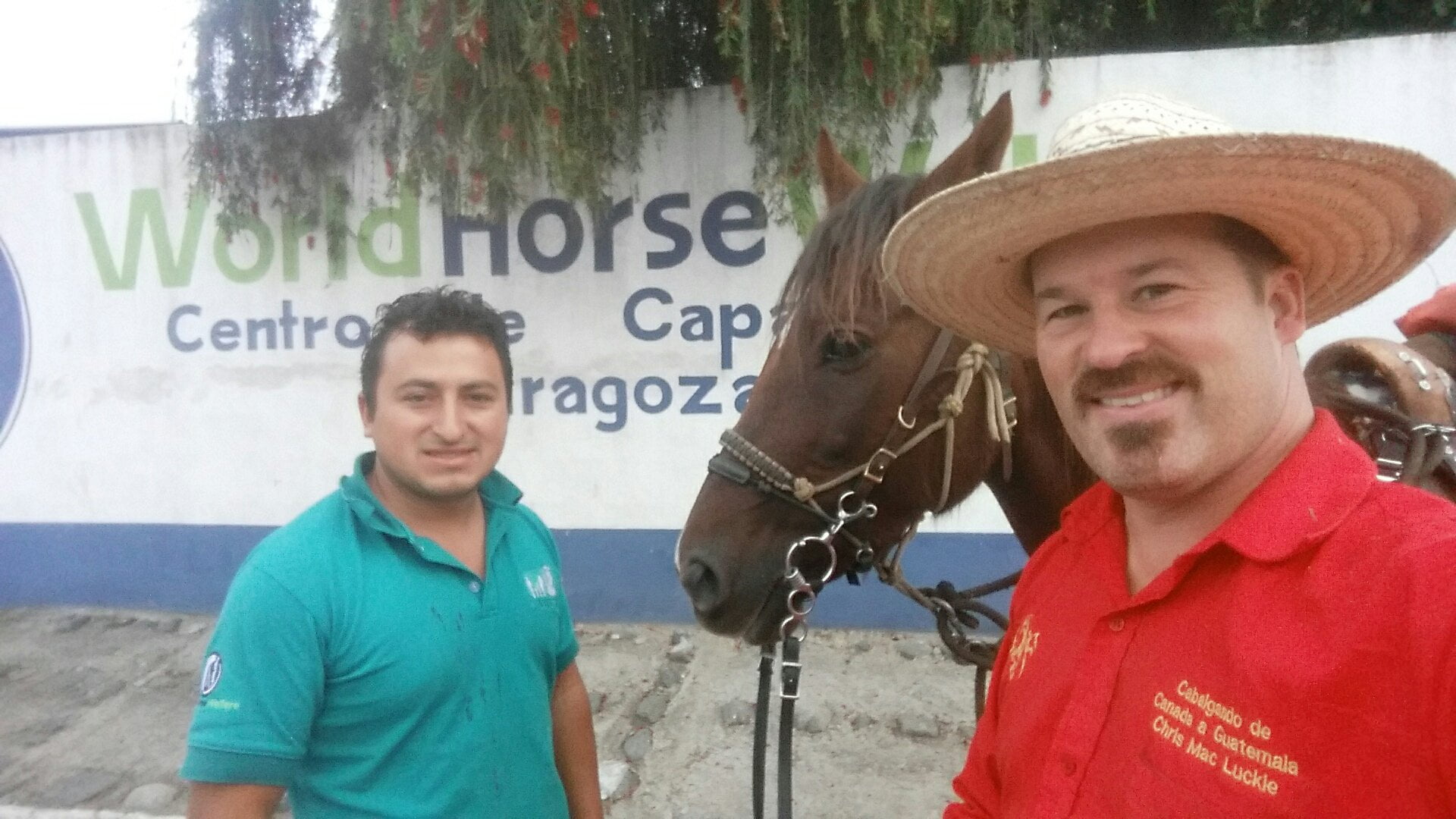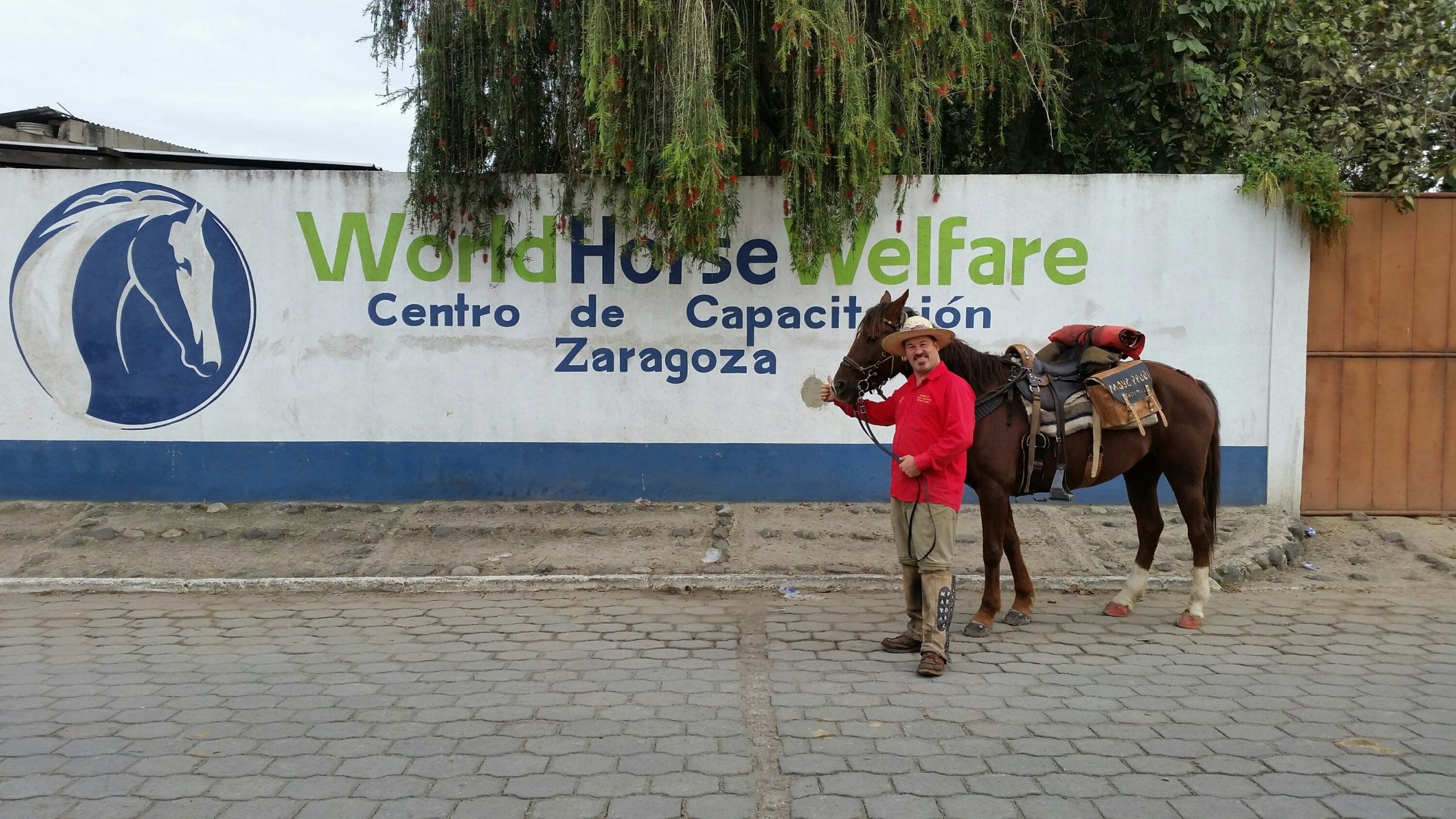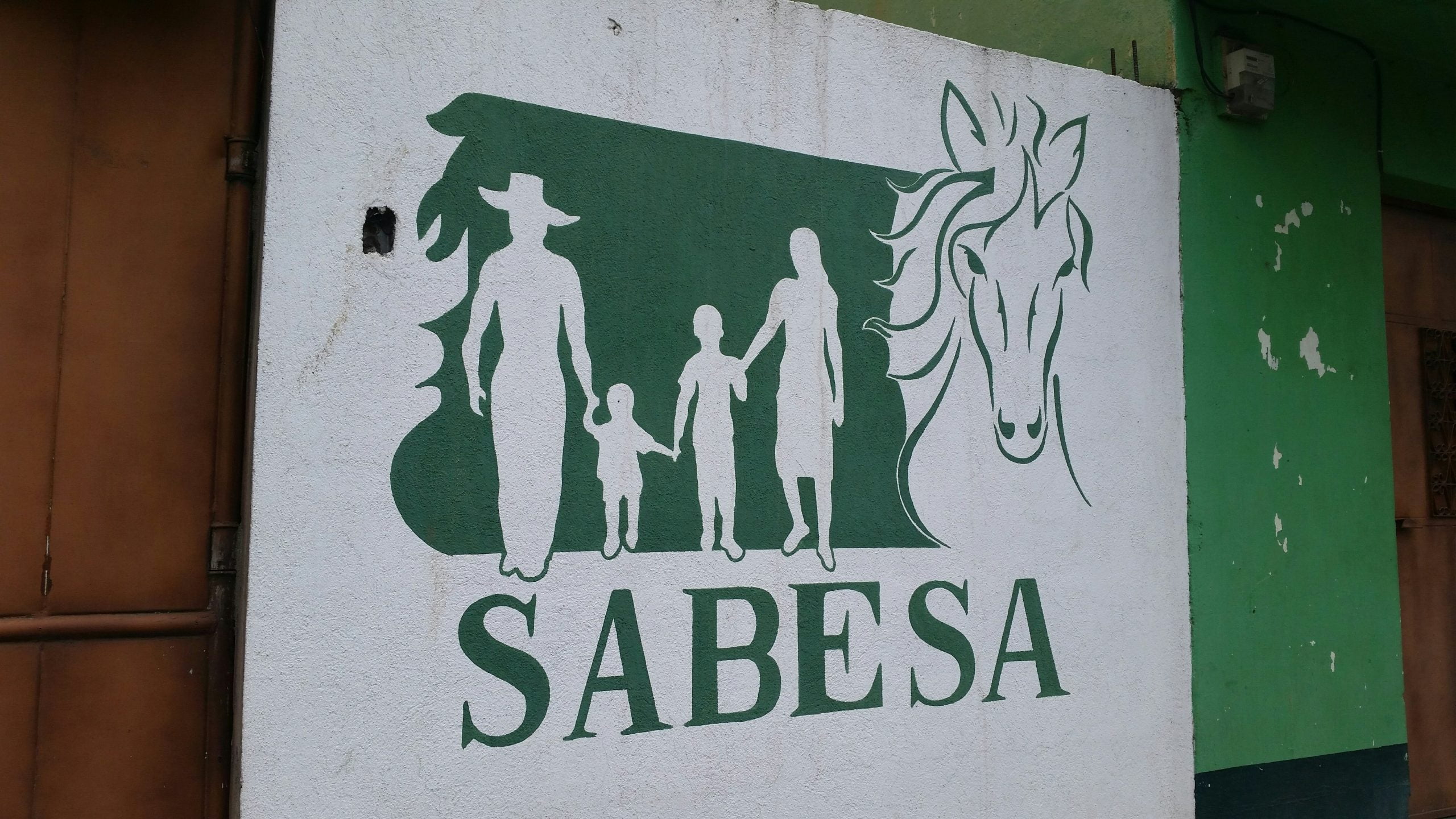Most of the horses I’ve seen in Guatemala have been work horses. A cargo/ riding hybrid.
I have seen very fine horses at the horse parades I’ve attended, but these horses came from all over the country and are owned by very wealthy people. Day to day, as I rode thru Guatemala from the Mexican border, and now, as I ride all around San Andres Itzapa, I see horses being WORKED.
San Andres Itzapa supposedly has 800 horses in the town itself. That’s for a town 18000 people. The horses here are owned primarily by farmers. They ride or walk their horses to their fields, and ride or walk them back, usually with some kind of harvest or feed on top.
The saddles these farmers use aren’t really a saddle. They are a triple layer of pad, cinched on tight with a wide girth. Sometimes a rear crupper is used. When mounted, the rider sits on top, with no stirrups. They can ride even with a load on.
One disadvantage of this set up is the direct pressure on the top of the spine as there is no tree.
Efforts to offer more ergonomic and healthy saddle options come from horse organizations like SABESA and World Horse Welfare and the accompanying workshops.
SABESA of Zaragoza, and World Horse Welfare of the UK provide horse health workshops in the San Andres Itzapa area, as well as throughout Guatemala, and other countries where work horses are still commonly used. They also offer pack saddles at subsidized rates to motivate the farm workers to try them.
https://www.worldhorsewelfare.org/Guatemala
(I will write more about the work of SABESA and WHW, as well as some super exciting news, shortly.)
Resistance to these saddles can be summarized as not able to ride and carry load at same time with a treed pack saddle.
Life here is tough for both the farmers and the horses. The farmer is barely making enough money to feed his family, so how is he going to feed or care for the horse at an optimal level? Just as boys and girls here work at a young age, so do the horses. The horses are being used and worked heavily by 3 years old.
Unbalanced diets are the norm as supplements are rarely given. De-worming is performed sporadically. Teeth aren’t floated.
And breeding, backyard at its best. Many of the horses are thin and thin shouldered because of their diet and working conditions. Then 2 of these horses are bred together…the offspring are what you can imagine.
Now let’s talk about their feet.
Before I start talking about how the feet are bad, I have to say this.
Throughout my 13 month ride from Canada to Guatemala, ALMOST EVERY HORSE I SAW HAD POORLY TRIMMED FEET. And this included MANY horses owned by multi millionaires. I don’t know why this is, but it seems horse people in general have a mental block when it comes to proper hoof care. But for now I will talk about the hoof condition of the Guatemala work horses.
Based on the general description I’ve been painting of the condition of Guatemala work horses, what do you think their hooves look like?
First off, many are not shod, yet are worked 5 or 6 days a week. Depending on conformation, the hoof wears out unevenly. For those that are shod, most don’t get their shoes reset often enough. But I saw this everywhere on my first trip. Canada, USA, Mexico, and Guatemala. Rich people, poor people. I’ve never had a shod horse, but I hear that shoes should be reset every 6 weeks. In the rainy reason, thrush or foot rot can become common. Stalls and paddocks are in general, rarely cleaned.
On top of all this, medicine and knowledge for horse health problems is sorely lacking.
Here are some of the symptoms of these types of living and work conditions:
- Sore backs
- Saddle sores
- Girth sores
- Crupper rubs
- Sore feet
- Indigestion
- Ulcers
- Infections
- Low energy
I feel bad for the horses; I feel bad for the poor farmers; and I get mad that there is such poverty on this planet…
If you feel the same way, you can go to the World Horse Welfare website to see the ways you can donate to different projects they are managing, including the one here in Guatemala.
In the next little while I’ll be writing in more detail about my visits to some of the clinics that World Horse Welfare held in Guatemala this November, in partnership with SABESA and the Texas Equine Veterinary Association.
Thanks for reading!

